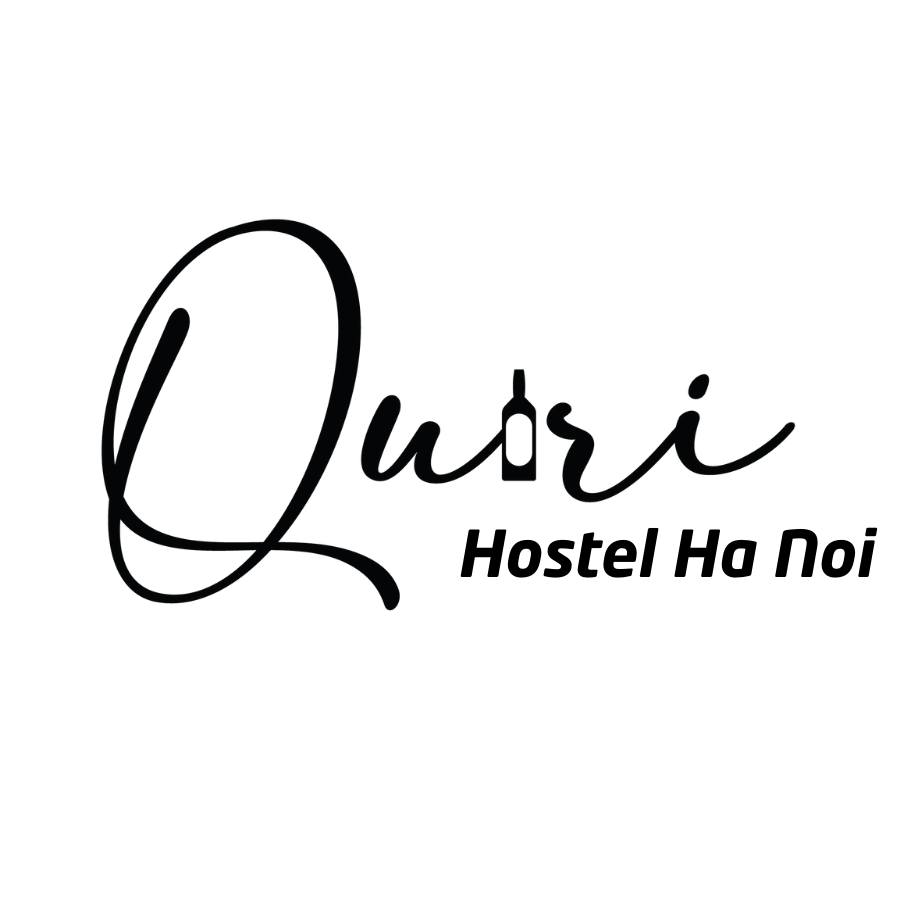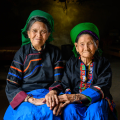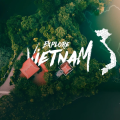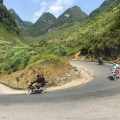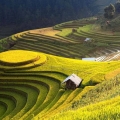The Role of Ethnic Minorities in Vietnam’s Cultural Identity
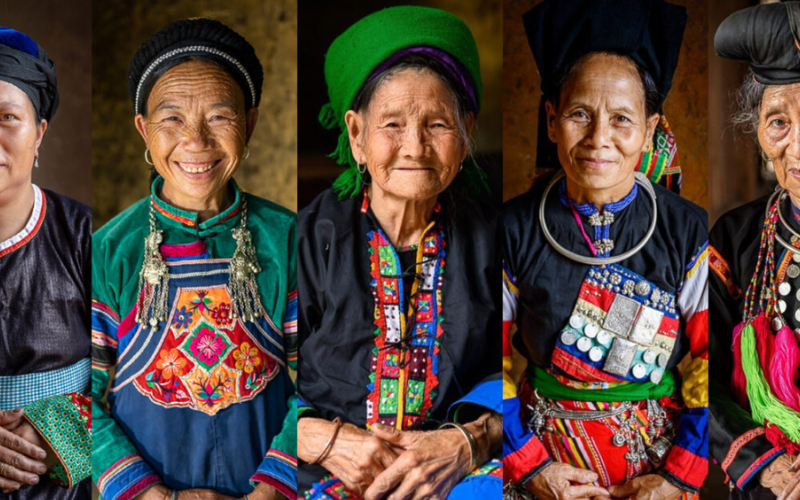
Across Vietnam, ethnic minorities are the guardians of traditions that enrich the national identity. From Ha Giang’s mountain markets to the gong festivals of the Central Highlands, these communities keep languages, crafts, and customs alive despite pressures of modernization.
Understanding and appreciating their role is essential not only for cultural preservation but also for supporting sustainable development in these regions.
Ethnic Minorities Across Vietnam
Ha Giang - A Living Museum of Highland Traditions
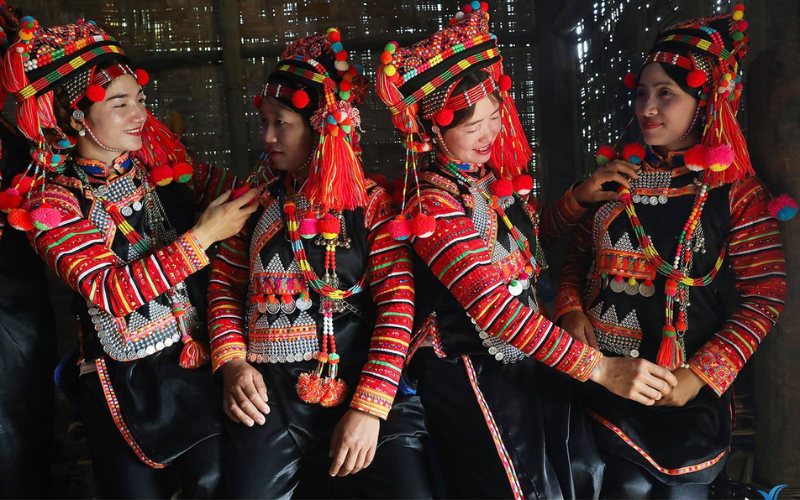 Ha Giang is often seen as the cultural heart of Vietnam’s northern mountains, with more than 90% of its population belonging to ethnic minorities such as the Hmong, Tay, Dao, and Nung. Markets in Dong Van and Meo Vac become colorful gatherings where people trade goods, meet friends, and wear their finest embroidered clothing. Festivals like the Hmong New Year celebrate community spirit through music and games. Together, these traditions define Ha Giang culture as one of the most authentic in the country.
Ha Giang is often seen as the cultural heart of Vietnam’s northern mountains, with more than 90% of its population belonging to ethnic minorities such as the Hmong, Tay, Dao, and Nung. Markets in Dong Van and Meo Vac become colorful gatherings where people trade goods, meet friends, and wear their finest embroidered clothing. Festivals like the Hmong New Year celebrate community spirit through music and games. Together, these traditions define Ha Giang culture as one of the most authentic in the country.
Sapa - A Colorful Mosaic of Northern Ethnic Groups
In Sapa, Lao Cai province, ethnic diversity is visible everywhere, with groups such as the Black Hmong, Red Dao, Tay, and Giay. The Red Dao are instantly recognizable by their red headscarves and intricate embroidery, while the Hmong are known for indigo-dyed textiles. Markets here serve as cultural exchanges where communities maintain their identities through clothing, food, and craftwork. Despite the town’s modernization, Sapa’s surrounding villages remain strongholds of traditional practices that continue to enrich Vietnam’s cultural landscape.
Mai Chau - The Peaceful Valley of the Thai People
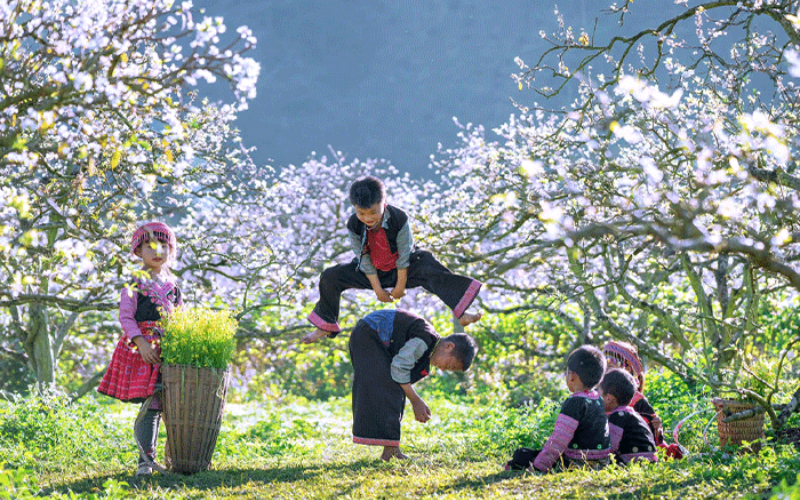
Located in Hoa Binh province, Mai Chau is home to the White Thai and Black Thai ethnic groups. Life here is centered around stilt houses made from bamboo and wood, which symbolize family and community bonds. Cultural identity is also preserved through weaving, with vibrant brocades and handwoven textiles still common in daily life. Traditional folk dances and songs are performed during local gatherings, connecting generations. This balance of tradition and simplicity makes Mai Chau an accessible place to experience Vietnam’s ethnic diversity.
Dien Bien - History and Highland Diversity
In the far northwest, Dien Bien is both a historical site and a center of ethnic minority life. Communities such as the Thai, Hmong, and Kho Mu have long inhabited the Muong Thanh Valley and surrounding mountains. The Thai people are known for their traditional wooden stilt houses and rice farming practices, while the Hmong are recognized for their vibrant clothing and seasonal festivals. Dien Bien is less visited compared to other regions, allowing its cultural practices to remain largely authentic. This mix of history and diversity makes it a unique part of Vietnam’s ethnic heritage.
Central Highlands - Gong Culture and Indigenous Heritage
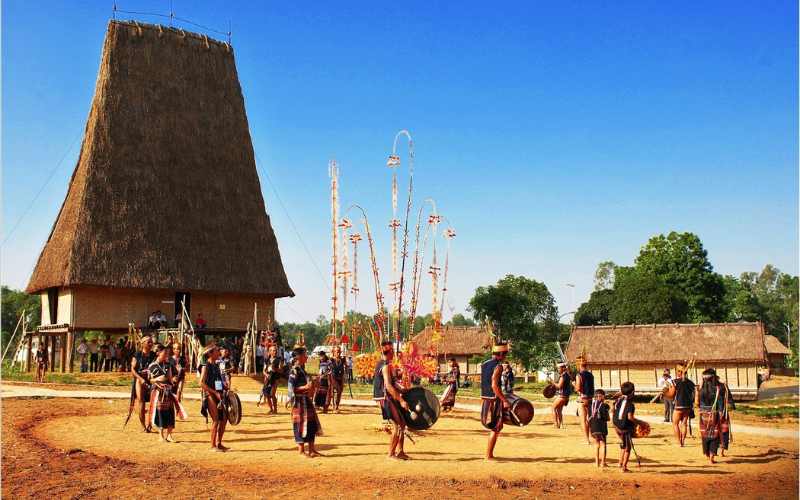 The Central Highlands of Vietnam, covering provinces such as Gia Lai, Dak Lak, and Kon Tum, are home to ethnic groups including the Gia Rai, Ede, Mnong, and Ba Na. The region is best known for its gong culture, recognized by UNESCO as intangible heritage. Gong ensembles play a central role in festivals, rituals, and communal life. Villages often feature tall, thatched communal houses (rong houses), which reflect the strength of collective identity. Storytelling, myths, and epics passed down orally continue to define the cultural richness of the Central Highlands today.
The Central Highlands of Vietnam, covering provinces such as Gia Lai, Dak Lak, and Kon Tum, are home to ethnic groups including the Gia Rai, Ede, Mnong, and Ba Na. The region is best known for its gong culture, recognized by UNESCO as intangible heritage. Gong ensembles play a central role in festivals, rituals, and communal life. Villages often feature tall, thatched communal houses (rong houses), which reflect the strength of collective identity. Storytelling, myths, and epics passed down orally continue to define the cultural richness of the Central Highlands today.
Conclusion
Ethnic minorities in Vietnam provide a window into the traditions, values, and ways of life that define the country’s rich diversity. From the vibrant Ha Giang culture in the far north to the gong traditions of the Central Highlands, these communities remind us of the depth and richness of Vietnam’s heritage.
Exploring their villages and learning their stories is not just cultural discovery—it is a way of connecting with the authentic spirit of Vietnam.
